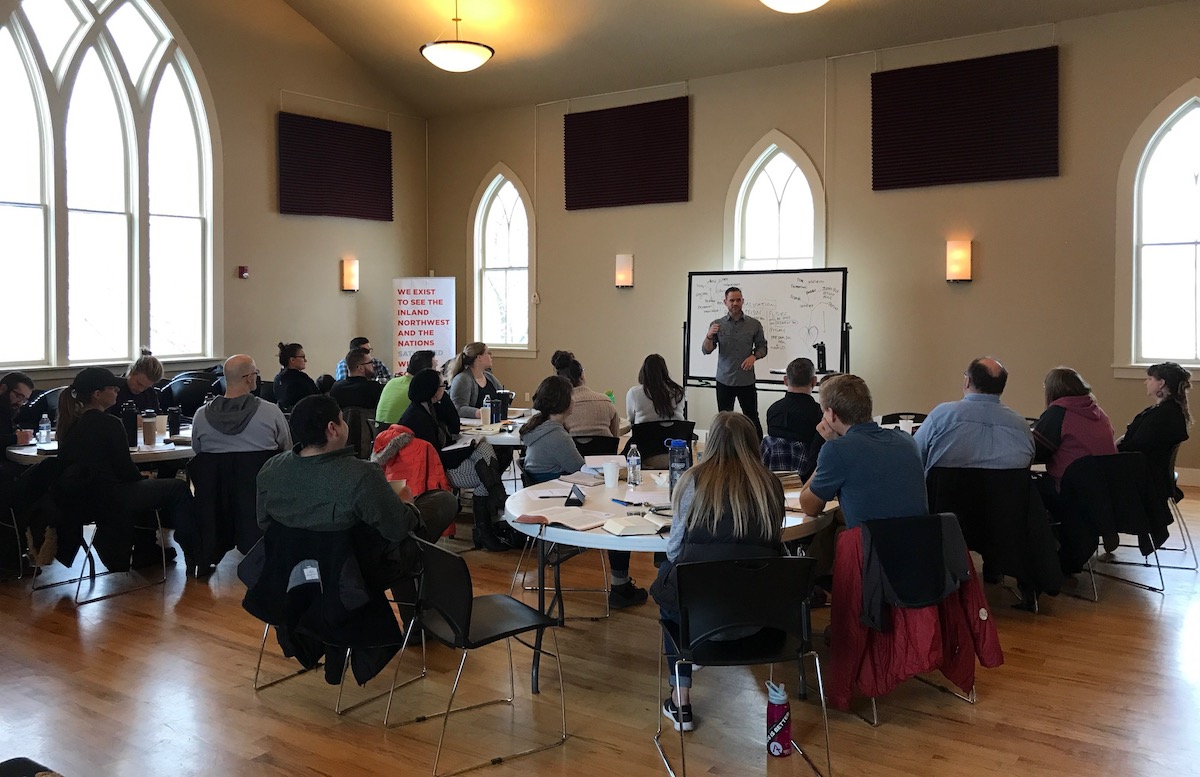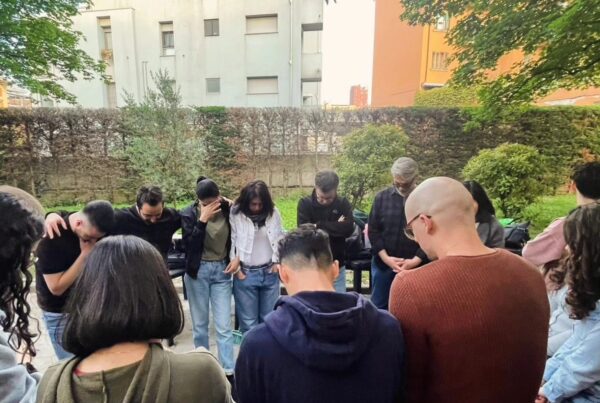Many leaders get into church planting or leading in a church because they care about people and want to see lives changed; marriages healed, past hurts redeemed, addictions broken. This is why they labor, pray, vision cast, have meetings, preach sermons and sacrifice so much.
But how does this sort of life change happen?
The work of the Holy Spirit is the main contributor, but the other part comes through relationships and systems. In fact, God is a God of relationships and systems. We see both of these in Genesis 1.
First, we see the relational aspect of the Trinity when God creates man and woman in His image. But, we also know that he organized the universe with systems. Time is measured through a system. Think of your body, it is a series of systems: respiratory, digestive, and nervous, just to name a few. And when Paul talked about the church in the New Testament, he spoke of it as a body, a system.
Often, church plants don’t build systems though — at least not intentionally.
Nelson Searcy, a mentor of mine, once told me, “A system is an ongoing process that saves you stress, time, energy, and money.” Besides helping your church steward time, money and energy better; systems also bring clarity to your church.
And so now, I would like to introduce you to 8 systems that we find beneficial at our church.
System 1: The Strategic System
The Strategic System sits above and serves as the foundation of all the other seven systems. People rarely leave your church because of vision or theology, though it happens. What I’ve found is that the number 1 reason people leave your church is that they disagree with your strategy. This could be how you preach, the kind of worship you have, how you do discipleship and community, kids’ ministry, or something else. But, before you get depressed, this is also the number one reason people love your church and come back (although they probably can’t articulate that).
Our church is a simple church that does Sunday mornings and groups throughout the week. Sunday is our front door; we target 20 to 40-year-old men, all to help people take their next step with God. Growth and community happen in the context of relationships in groups. That’s our strategy. It defines our audience, what needs we are trying to meet, and what our definition of success is. Nine times out of 10, people leave our church because you don’t like this strategy and that’s okay.
System 2: The Worship Planning System
Sunday is a stressful day, especially if you are a portable church like we are. Does your church know who your target is on a Sunday morning? The answer to this question determines the elements you use, the language you use, what you preach on, what songs you sing, and prayers your pray. After deciding the lens you are looking at Sunday morning through (based on your target audience), you can evaluate your worship planning system by asking questions like, “What was missing?” “What was confusing?” “How can we do things better?”
System 3: The Evangelism System
This system asks how you attract people to our church and how people find you. Ultimately, God sends people to churches, but why do some reach more than others? How many first time guests have you seen in the last year? How many should you have? If you average 100 adults on a Sunday, your goal should probably be to average 100 first time guests a year.
Guests can be attracted in many ways: social media, Facebook ads, Google Adwords, direct mail, invitation cards, servant evangelism, or creating significant Sunday events around holidays. Visitors also come through training your people in evangelism (and doing it yourself too!).
System 4: The Assimilation System
This system is your plan for taking people from their first visit to being fully-developing members of your church.
Often, church systems for this are a hope and a prayer.
Here are some questions to ask your team about this:
- What questions does a guest have when they show up?
- What does a guest feel when they walk into our church?
- What are we asking on our connection cards? There are often many useless things.
- What is a visitor’s next step from a Sunday morning? Is it obvious? Is it too big? If small groups are the only step from a Sunday morning for a guest, that is too big.
- What words do people use to describe their first impression? You’ll have to get this information from actual guests to know how you’re doing because every church describes themselves as friendly.
- How do guests who don’t know Jesus feel in your service? Can they connect and understand what’s going on?
System 5: The Volunteer System
This system determines how you mobilize people for a significant ministry at your church. We used to see groups as the step before this, but we’ve found it more accessible and less intimidating for our target to get onto a team before getting into a group.
Here are some questions:
- Is there someone in your church who serves precisely how you wish everyone did? How do you duplicate that person? What experiences did they have that got them that way?
- What are you doing to make people want to serve?
- How do people find out about serving opportunities in your church? Is it stage announcements? One-on-one recruiting? The number one way people start serving is that someone asks them.
- What does someone’s first time serving look like?
System 6: The Small Groups System
You should know how many adults are in your small group system and how many adults you hope to have. If you don’t have a goal, you don’t know how you’re doing. As you think through this system, you need to know if this to be the primary vehicle for discipleship in your church. If it is, are there things that are barriers to this?
Your strategy will have an enormous impact on how your groups look.
System 7: The Stewardship System
I remember an older mentor asking me how much ministry I could do with $100. I didn’t understand the question, but the answer was merely “$100 worth.” We don’t like to talk about money in church, but the reality is, it’s needed for your church to survive. Giving is a spiritual gift. This is crucial to understand in our culture because stewardship is a major battleground. When it comes to stewardship, teaching and modeling is the most critical combination.
Here are a couple of ideas to raise the value of stewardship in your church and onboard new givers:
- Do at least one series each year on stewardship. This topic is broad and not just financial.
- Do two 90-day giving challenges each year.
- Do 3 – 4 special offerings each year.
- Provide monthly financial updates.
- Tell stories in your monthly financial update on how the generosity of your church is moving the gospel forward and changing lives.
System 8: The Leadership System
If you want to see a healthy, growing church, you will need a clear plan to develop leaders. Sam Chand said, “Many churches measure the number of people as a benchmark of success, but the true mark of success is the size and strength of the core of leaders who shoulder the burden and spread the joy of God throughout the ministry of the church.” If you are a leader at your church, your primary responsibility is to attract, recruit, place, train and nurture as many volunteers and leaders as possible.
Here are some questions to consider:
- How many leaders have you developed? When was the last time you invested in the development of new leaders?
- How are you developing the leaders and staff that you have?
Systems & Relationships
Do you see the connection between systems and relationships? If you have bad people or teams and bad systems, your church will likely close at some point. If you have good systems but don’t have good people or teams, you will still get some results. If you have good people but a bad system, you will get a lot of frustration, which is where I think a lot of churches sit. But, if you have good systems and good people, a lot of flourishing happens in that space.










